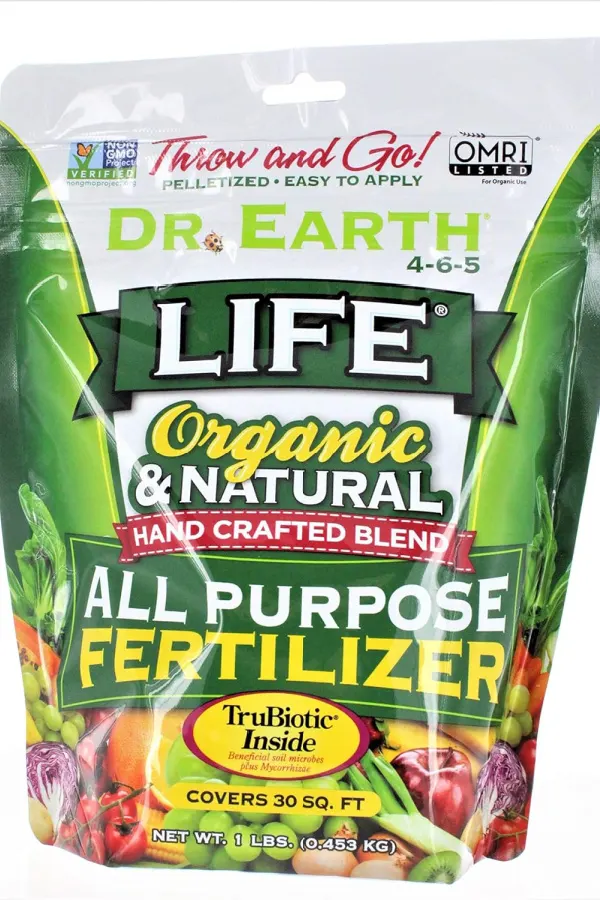Did you know that there are three perennials you can divide right in the middle of summer to help keep your flowerbeds fresh and manageable – and give you more plants for free to add even more life and color to your beds?
When it comes to expanding your flowerbeds without spending a dime, there’s no better method than dividing perennials. While many perennials are best divided in the early spring or late fall when temperatures are cooler and plants are not in active growth, there are a few that tolerate and even benefit from being divided right in the middle of summer.
Summer division can help rein in overgrown plants. It can also keep your flowerbeds from becoming too crowded, and give you more healthy starts to fill out other areas of your landscape. Best of all, it lets you rejuvenate tired plants that are starting to look a bit ragged from the heat and bloom cycles of early summer.
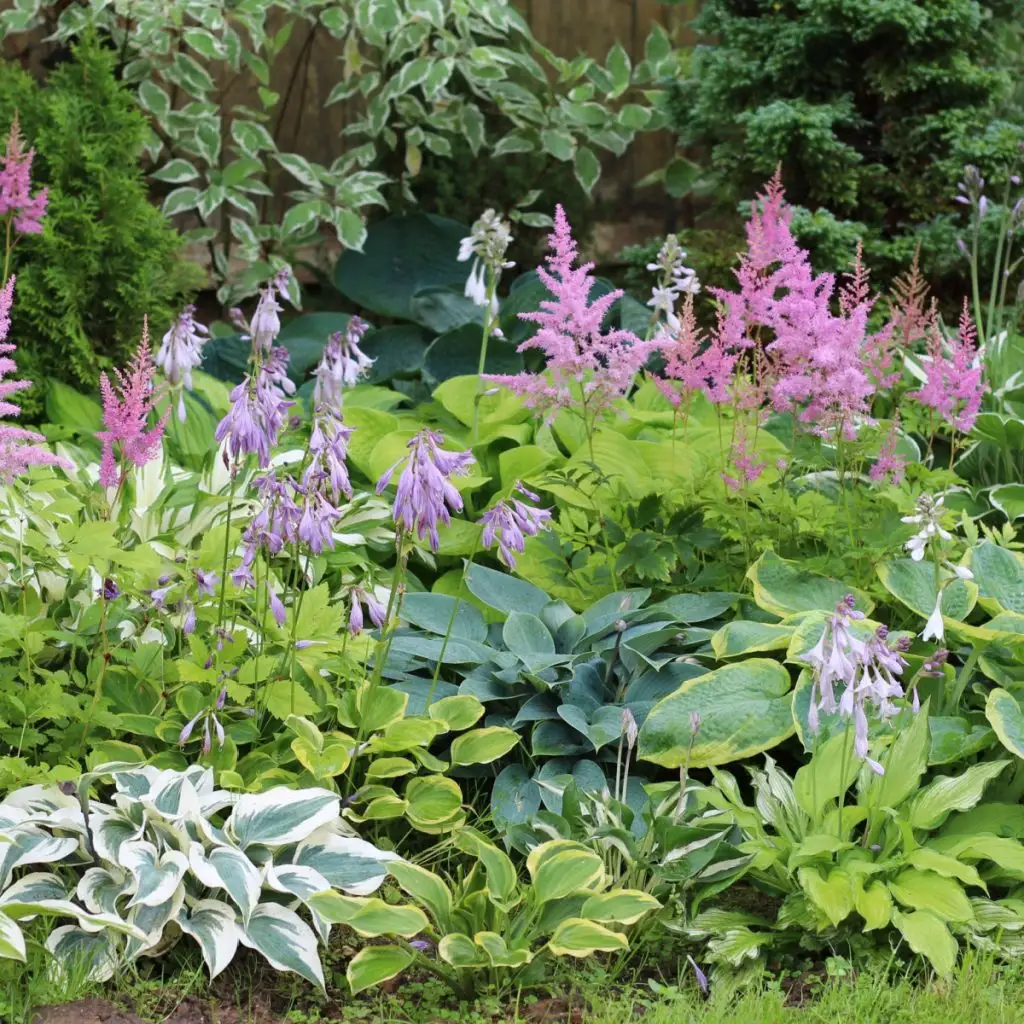
With the right care, a few dependable perennials can be split, moved, and replanted even during the hottest part of the growing season. Even better, all three will bounce back quickly with lush foliage before the season ends.
So what are these three popular perennials? Among the easiest and most reliable summer-dividing plants are daylilies, hostas, and coral bells. Not only are they tough enough to handle summer transplanting, but when you divide them correctly, you’ll end up with bigger, better plants the following year.
Here’s a look at each plant and how to divide them right in the middle of summer!
3 Popular Perennials You Can Safely Divide In The Summer
Daylilies – A Perfect Mid-Summer Split Candidate
Daylilies are one of the most forgiving perennials when it comes to summer division. The hardy plants have thick root systems that store energy well, making them resilient even when lifted during their blooming season or shortly after.
If you notice your daylily clumps getting crowded, producing fewer blooms, or looking tired by mid-summer, that’s a good indication it’s time to divide.
To divide daylilies, start by digging up the entire plant clump. Use a shovel to loosen the soil all around the plant a few inches out from the crown. Once the clump is free, gently shake off excess soil. Once out, then flip the clump over on the ground to see the roots.
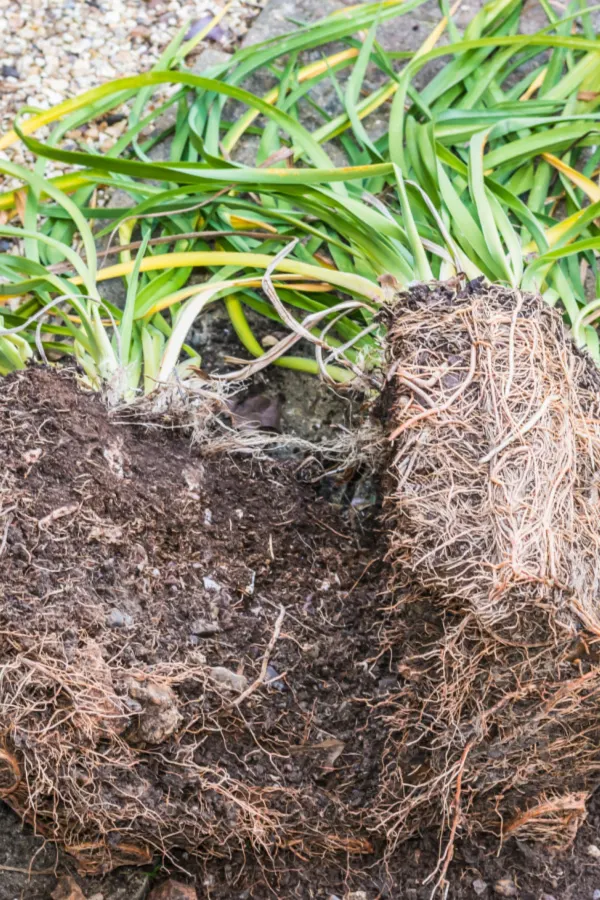
Most large clumps will break apart easily with a sharp garden knife or spade. Slicing them with the plant turned over makes it easy to see where to cut the roots. Affiliate Link: Hori Hori Garden Knife
Each division should include a healthy section of roots and at least two to three growing fans or shoots. Once divided, trim back the top foliage of each section to a few inches in height. This reduces stress on the plant and helps the roots focus energy on getting established rather than supporting its existing foliage.
Replanting Daylily Transplants
When replanting, dig a hole wide enough to spread out the roots. Water the hole before planting to moisten the area and then fill in with soil around the division.
To help the new divisions establish quickly, sprinkle a light dose of 5-5-5 granular fertilizer into the planting hole. Gently mix it into the soil before placing the plant in. Water again after planting, and continue to water every few days for the next couple of weeks to keep the soil consistently moist. Affiliate Link: Dr. Earth 91164 1 lb. 5-5-5 MINIS Life All Purpose Fertilizer
By the end of summer, the trimmed-back daylilies will push out new shoots and foliage. While you may not get blooms from the new divisions this year, the plant will be strong and full by the following spring and ready to flower heavily once again.
Check out this week’s featured podcast below!

Hostas – Another Popular Perennial You Can Divide In The Summer
Another great perennial that can be divided in the summer is the hosta. Known for their large, showy leaves and shade tolerance, hostas often become overcrowded after several seasons, which can lead to stunted growth and fewer leaves.
They also often become a bit tattered and worn in the summer. And when this happens, dividing can be a great way to rejuvenate them. See: What To Do With Hostas After They Bloom – How To Keep Hosta Leaves Healthy & Strong!
Begin by digging around the plant a few inches out from the base. This helps to preserve as many roots as possible. Once you have done this all around the plant, simply lift the entire root ball from the ground.
Once removed, just as with daylilies, flip the hosta over to see the roots more easily. You can divide the clump with a sharp garden knife or shovel. Most mature hostas can be split into several divisions, each with at least two or three leaf stems and a solid portion of root.
Just like with daylilies, trim back the foliage of each division to two to three inches tall to reduce stress and moisture loss. Hostas are foliage plants, so allowing them to grow new leaves while the roots establish is important.
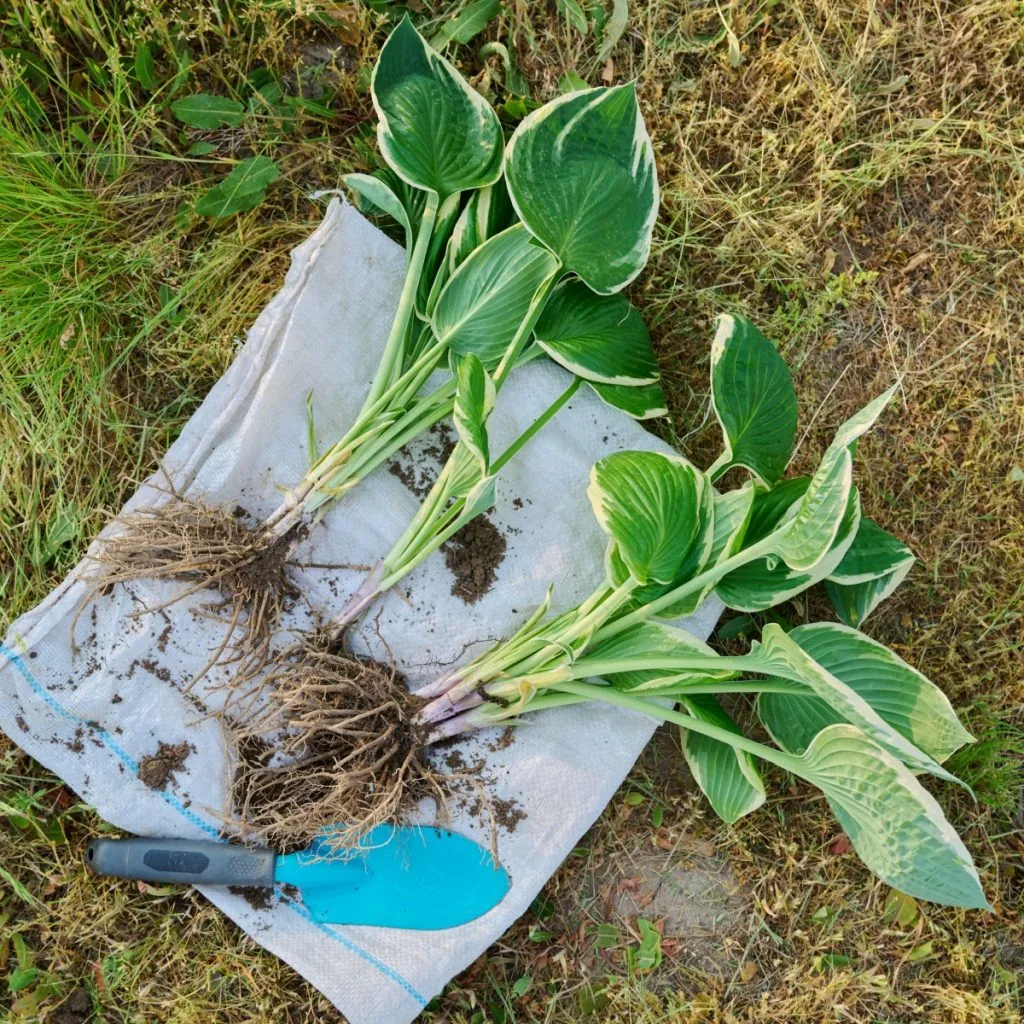
Replanting Hostas In The Middle Of Summer
Replant each division in rich, well-draining soil. Hostas enjoy organic material, so if you have compost available, mix it into the planting area to enrich the soil. When placing the divisions into the soil, add a small handful of 5-5-5 granular fertilizer and blend it lightly into the bottom of the hole.
This balanced fertilizer will provide a steady supply of nutrients to help the roots get growing. Water thoroughly after planting, and keep the soil damp for the next two weeks.
By late summer, you’ll see new leaves forming and the plants will look fresh and full again. The extra space created by dividing also gives the roots more room to spread, helping the plant prepare for even more growth the following spring.
Coral Bells – Easy To Lift & Divide For More Plants
Coral bells are prized for their colorful, ruffled foliage and delicate flower spikes. The perennials are perfect for adding pops of red, purple, bronze, or lime green to flowerbeds and borders. Best of all, they are simple to divide during the summer to create more plants!
Coral bells tend to form a dense crown that can become woody and congested over time. When that happens, the centers of the plants begin to thin or die out, signaling it’s time to divide. Unlike hostas and daylilies, coral bells don’t have deep root systems, which makes them even easier to lift and transplant.
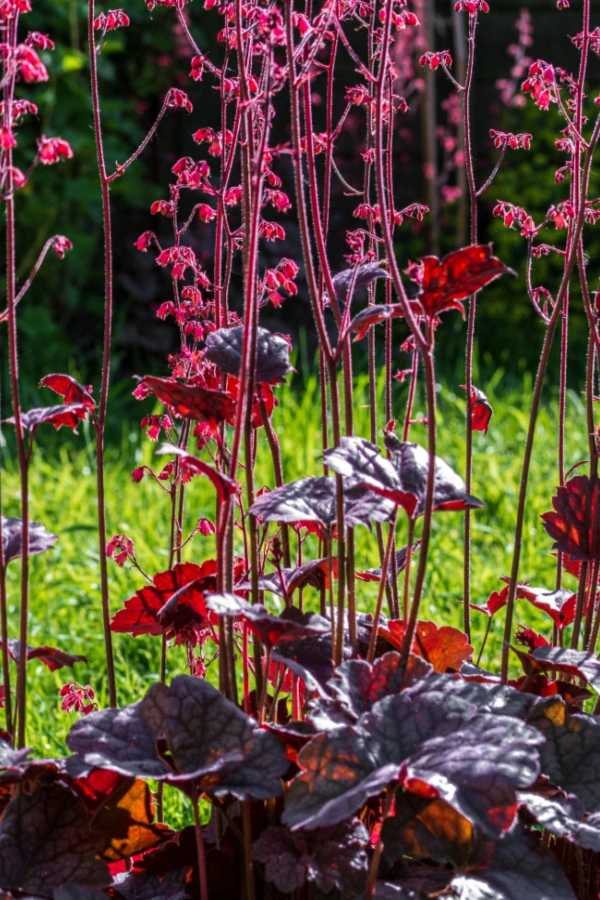
To divide coral bells, use a shovel to gently lift the entire clump out of the ground. Shake off any excess dirt to better see the root structure. Coral bells often separate easily into two or three clumps by hand, especially if the plant is a few years old.
Trimming Back & Replanting
Trim the foliage back to a few inches above the crown. This helps the plant conserve energy and reduces water stress during reestablishment. Dig a small hole for each new division and water the area well before placing the plant in.
As with the others, a light dose of 5-5-5 fertilizer mixed into the soil at planting time will help the roots grow fast and strong. Coral bells prefer slightly moist but well-drained soil, so be careful not to overwater after transplanting.
A light layer of mulch can help keep the soil cool and conserve moisture, which is especially helpful during the hot summer months. Within a few weeks, new foliage will start to appear, and the divisions will look fresh and vibrant. Coral bells often rebound quickly after division and can even begin forming new side shoots before fall arrives.
A Few Extra Tips For Dividing Perennials In The Summer
While dividing perennials in the heat of summer, always water your perennials deeply a day or two before dividing. This ensures the roots are well hydrated and easier to work with. Second, try to divide on an overcast day or in the early morning or evening hours to avoid mid-day heat.
After transplanting, it’s important to keep the newly planted divisions watered regularly for at least two weeks. They don’t need to be soggy, but the soil should stay evenly moist. Adding a thin layer of mulch around the base of the plant will help conserve moisture and keep the roots cool as they recover.
Cutting back the foliage is one of the most overlooked but most important steps when dividing perennials in summer. Less top growth means the roots won’t have to work as hard to support the plant.
Finally, the small boost of balanced 5-5-5 granular fertilizer is just enough to feed new growth without overwhelming the plant. Avoid using high-nitrogen fertilizers right after dividing, as they can encourage excessive leaf growth before the roots are ready to support it.
Here’s to dividing a few of the most popular perennials right in the middle of summer – and to giving your garden more breathing room, creating more plants for free, and encouraging healthier, more productive plants for seasons to come!
This Is My Garden
Follow Our Facebook Page For Great Gardening Tips And Advice! This Is My Garden Facebook Page
This Is My Garden is a garden website created by gardeners, for gardeners. Jim and Mary Competti have been writing gardening, DIY and recipe articles and books and speaking for over 15 years from their 46 acre Ohio farm. They publish three articles every week, 52 weeks a year. Sign up today to follow via email, or follow along!

